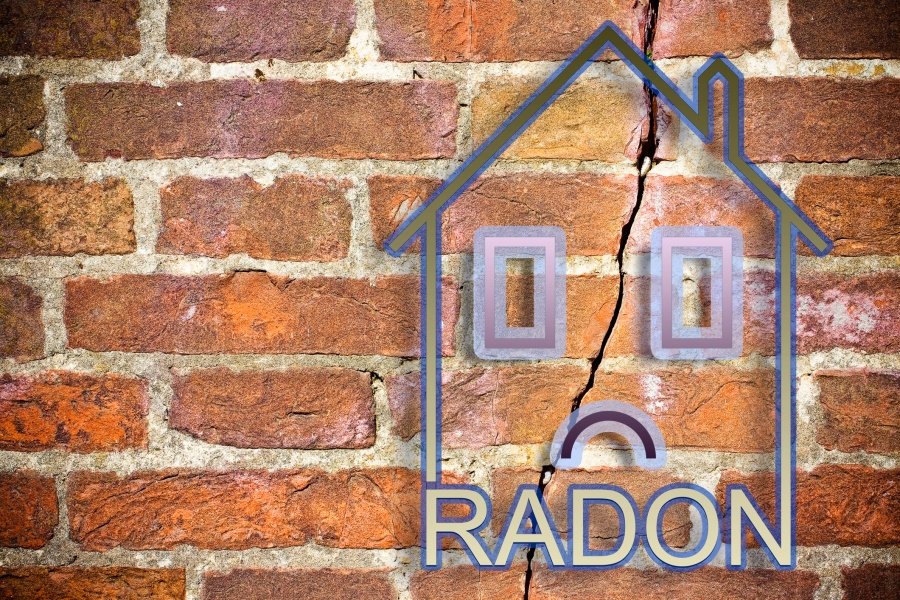TAMPA, Fla. (WFLA) — Only nine counties in the state of Florida are at a moderate risk of radon poisoning. The rest of the state has a “low potential” for radon levels to be dangerous in county homes.
One third of the state’s moderate zones are in Tampa Bay. “People can be exposed to radon primarily from breathing radon in air that comes through cracks and gaps in buildings and homes,” according to the U. S.
Environmental Protection Agency. “Because radon comes naturally from the earth, people are always exposed to it. ” US landlords deceived, evicted thousands during COVID, report says To be fair, radon is possible anywhere.
It’s a radioactive gas that comes up through the Earth’s crust, after different radioactive minerals break down in rock, soil, or groundwater. (Source: EPA) As previously reported, the U. S.
Environmental Protection Agency page on fertilizer production, called Radtown, says that phosphogypsum stacks, the preferred storage method for the waste from mining phosphate rock, contains “naturally-occurring uranium, thorium and radium. ” Those three minerals are what decay into radon over years underground. In Florida, the nine counties with higher radon risk are all flagged as Zone 2 risks, meaning moderate levels of radon may be found indoors.
In the Tampa Bay area, Citrus, Hillsborough, and Polk counties all have a moderate risk for radon poisoning, one of the most common causes of lung cancer in the United States, according to the U. S. Centers for Disease Control and Prevention.
Zone TypeRisk LevelZone 1 (Red)Highest potential; average indoor radon levels may begreater than 4 pCi/L (picocuries per liter)Zone 2 (Orange)Moderate potential; average indoor radon levels may bebetween 2 and 4 pCi/LZone 3 (Yellow)Low potential; average indoor radon levels may be less than 2pCi/L(Source: EPA) While any home could still have a risk of radon, the three counties in Tampa Bay at a higher risk than most of the state have something in common. Phosphate mines, both active or shutdown. Since the late 1800s, Florida has had active phosphate mines, ranging by location from Alachua County to Citrus, then moving through central Florida.
The mining of what’s known as pebble phosphate, used for fertilizer and animal feed in agriculture, began in central Florida in 1888, according to the Florida Department of Environmental Protection. School buses back on road: Do you know when to stop? The DEP said mining efforts migrated to Hamilton County in the 1960s. Currently, the main phosphate mining operations are mostly in Polk, Hillsborough, Manatee, and Hardee counties.
The region known as Bone Valley makes up the central Florida section, and covers about 1. 3 million acres, according to DEP. Mining for phosphate still occurs in Hamilton County, in North Florida.
In recent years, various older phosphate mines went inactive, being maintained to prevent environmental contamination, but no longer actively harvested. Since 1975, phosphate mine locations are required to be “reclaimed,” or be used to preserve wildlife habitats and resources once mining ends. One location that made headlines due to structural issues was the Piney Point phosphate stack in Manatee County.
While it never ended up coming true, the fear from local authorities was that should the stack’s liner fully break, a wall of radioactive water could’ve flooded the neighborhoods around the plant. The radioactive element of the Piney Point water would have been radon. The phosphate stacks built to store wastewater from the mining process keep some of the material underground, but release radon gas as they dry out.
The EPA says a crust which on top of the stacks reduces how much of the gas is released. While Piney Point has since entered a receivership and construction on a Deep Injection Well to permanently contain the waste is underway, state officials are still keeping a watch on the phosphogypsum stack. As of Aug.
5, DEP said there were 262 million gallons of water in the NGS-South compartment of Piney Point, and pond levels are expected to fluctuate as weather changes and management activities continue. Even without Piney Point, radon levels in Citrus, Hillsborough and Polk counties are higher than most of the state. Areas that aren’t flagged as a moderate or high risk zone for radon gas should still be checked for levels of the radioactive contaminant.
The Florida Department of Health says radon is the leading cause of lung cancer for non-smokers, ad offers free test kits for residents. Less than 1/3 of Americans with hepatitis C get treatment, CDC says “In Florida, one in five homes tested has elevated radon levels above the action level of 4 pCi/L,” FDOH said. Elevated radon levels have been found in all types of buildings, including manufactured homes, schools and high-rise condominiums.
” To get a free test kit to check radon levels in your home or business, FDOH has a registration form that can be filled out online. .
From: wfla
URL: https://www.wfla.com/news/local-news/florida-rads-3-tampa-bay-counties-at-higher-risk-of-radon-poisoning/



